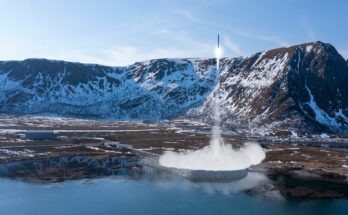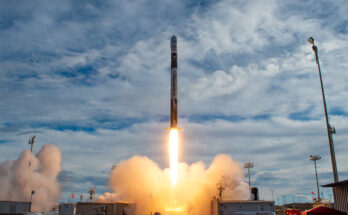
NASA and the Indian Space Research Organisation (ISRO) are in discussions with sending an Indian Astronaut to the International Space Station (ISS). The astronaut is planned to launch to the ISS later this year but there is another domestic mission currently in the works.
The Gaganyaan project will bring human spaceflight to India. ISRO plans to launch three astronauts to a 400 km orbit for three days. The mission will utilize a human-rated version of the LVM3 launch vehicle (also known as GSLV Mk. III). The GSLV Mk. III development began in March 2002 with a focus on a more powerful cryogenic engine and increased payload capacity. After several ground tests and delays, the Mk. III successfully launched in June 2017.
The Gaganyaan (celestial craft) capsule itself is currently under development. The crew module is designed to carry up to three astronauts in orbit for up to seven days. There will be three uncrewed orbital missions prior to the initial crewed flight. ISRO is targeting 2025 for the first crewed launch but as delays are normal in Spaceflight, a 2026 date is not out of the question.
ISRO was founded in 1969 and with Soviet help launched the first Indian satellite (Aryabhata) in April 1975. After this mission, ISRO embarked on an ambitious journey to become a self-reliant space power. They didn’t just focus on communication satellites; ISRO also developed a range of Earth observation satellites, providing crucial data for agriculture, disaster management, and resource mapping, demonstrating the practical applications of space technology for India’s development.
The War in Ukraine highlighted what India could bring to the global space market. OneWeb relied on Roscosmos to launch their satellite constellation. After the invasion, Russia held 36 OneWeb satellites and demanded concessions (reportedly that OneWeb satellites would never have a military use and that the British Government divest from the constellation) which were refused. OneWeb, therefore, needed a new launch provider. SpaceX and ISRO were chosen and there have since been two OneWeb launches on GSLV from India.
When the Gaganyaan crewed mission launches, India will join Russia, China and the United States in having sent humans into Space. The fact that ISRO and OneWeb made a deal leveraged ISRO’s growing capabilities in launching satellites, particularly their Geosynchronous Satellite Launch Vehicle (GSLV) Mk III (LVM3) rocket.
As time goes on, India will become more of a player in an increasingly diverse Space market. Although a majority of Indian launches are Indian payloads, the OneWeb deal shows ISRO is in a position to expand in the commercial sphere.
Carter Palmer has long held a keen interest in military matters and aviation. As a FI's space systems analyst he is responsible for updating the reports and analyses within the Space Systems Forecast – Launch Vehicles & Manned Platforms and Space Systems Forecast – Satellites & Spacecraft products.




